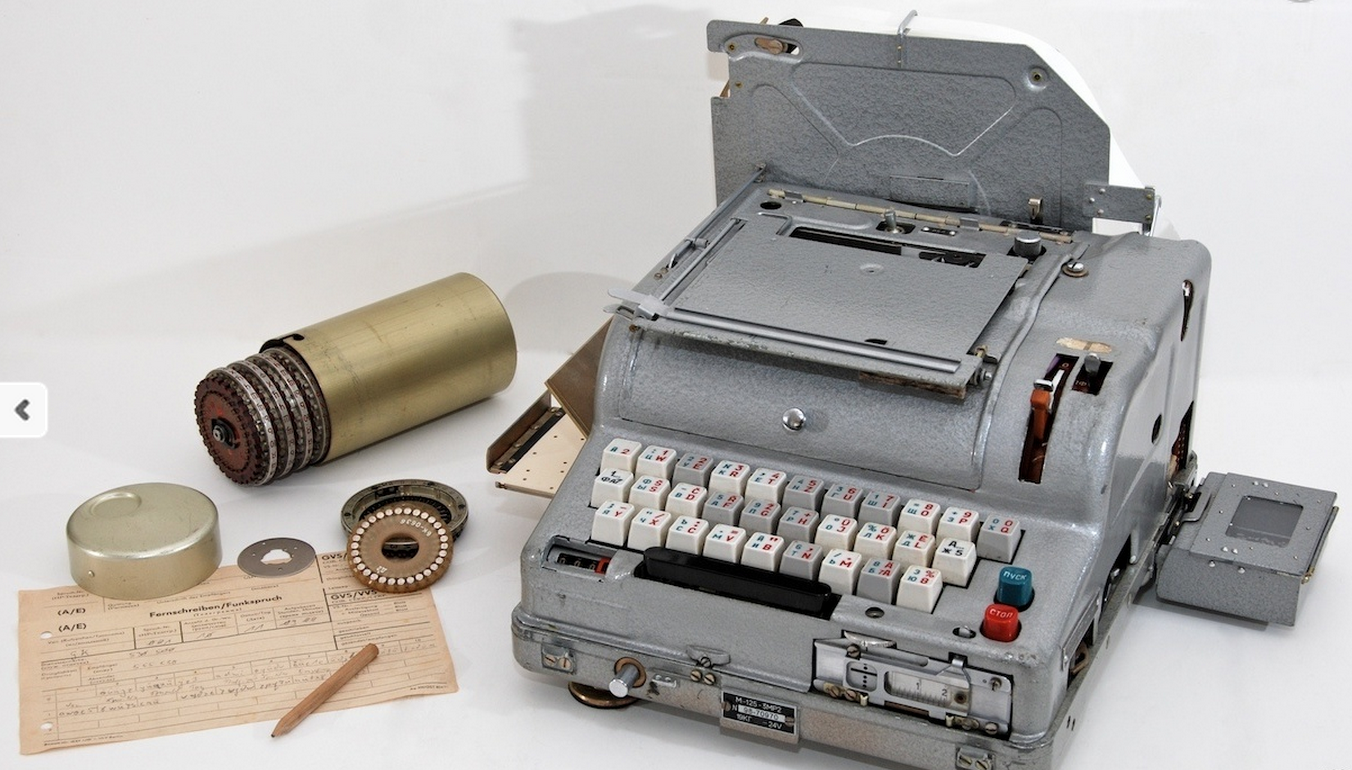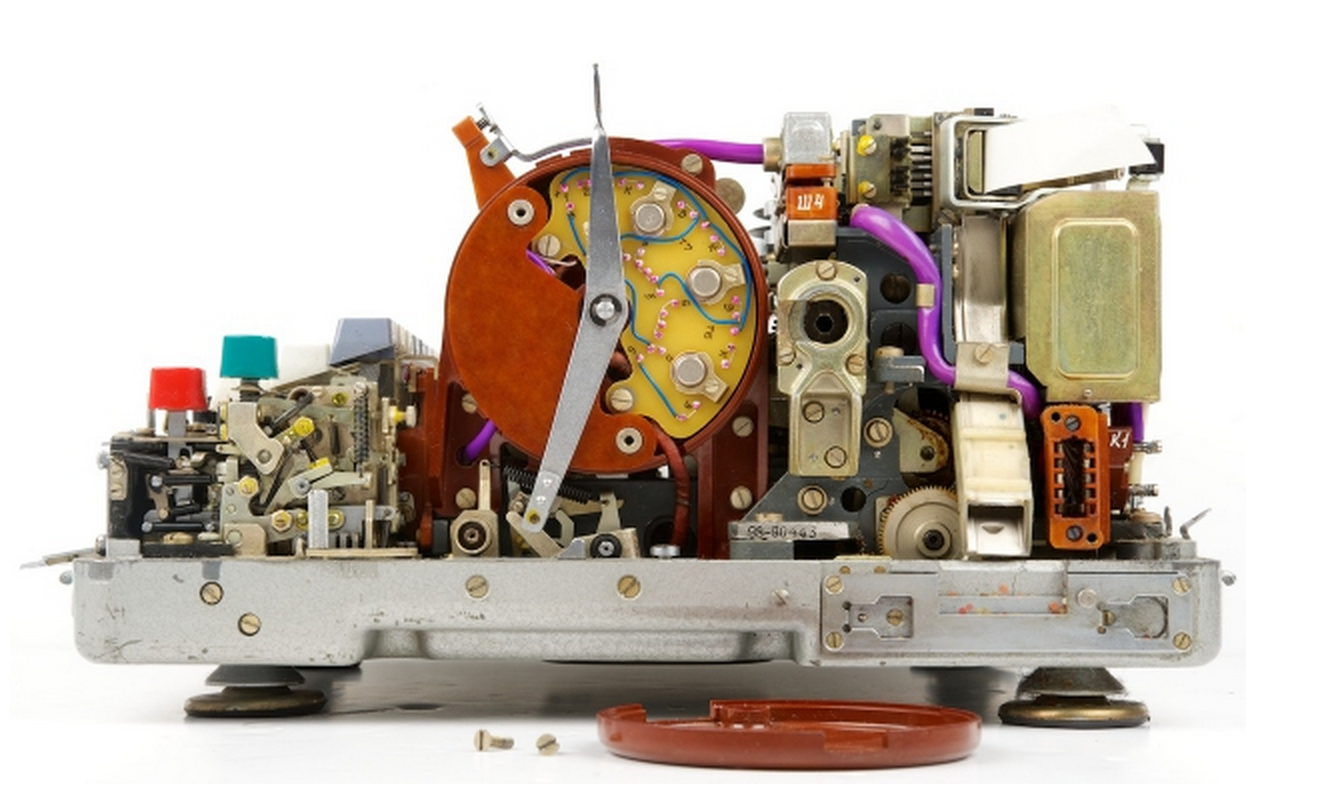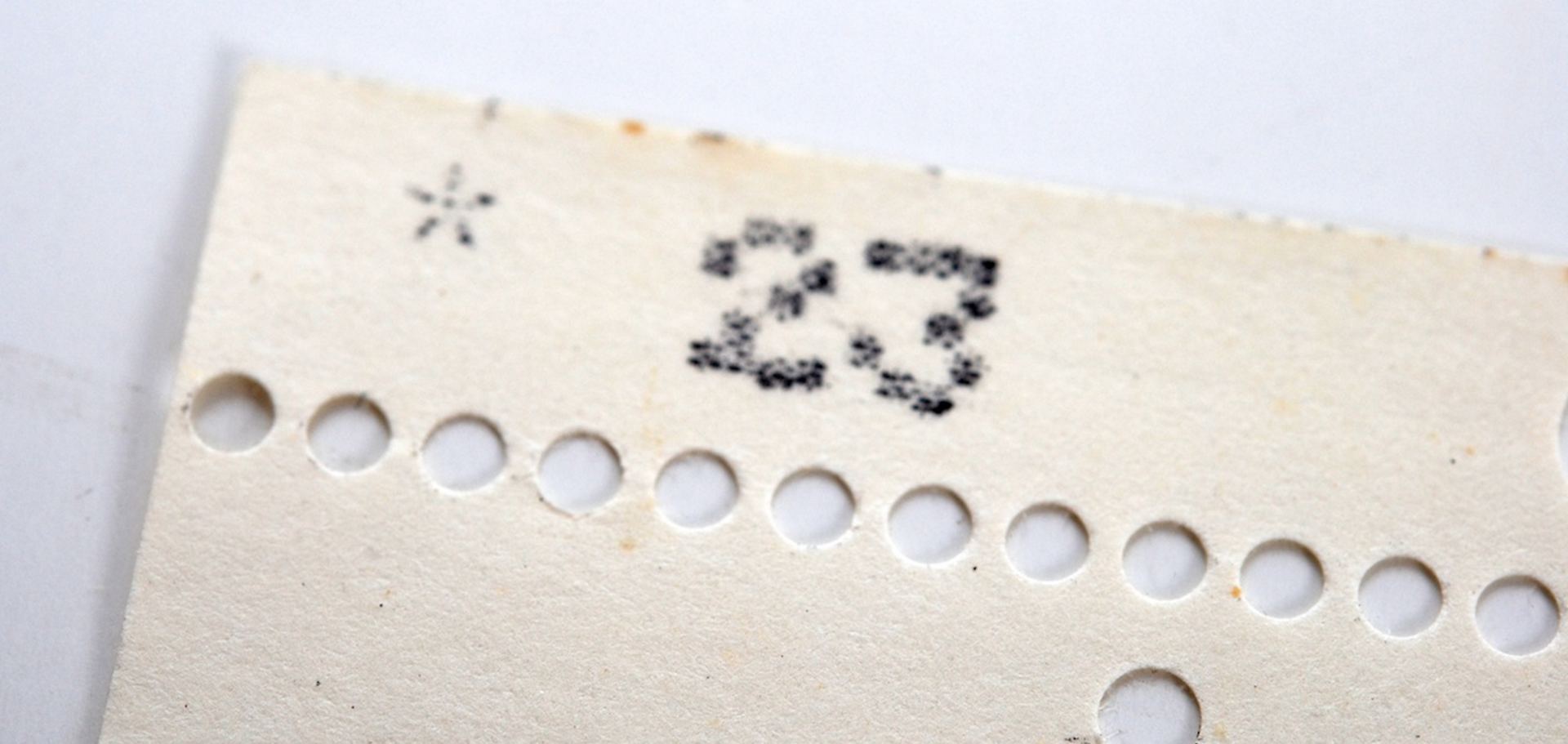Violet M-125
Special communication is a very difficult thing.
And the role of the cryptographer is very important.
to keep secrets.
Everywhere, even where the ocean is boiling
hiding submarines,
will send for a skillful "shaman"
your cryptogram reports.
Crypto machine M-125 - granddaughter of the legendary Enigma

M-125, codenamed Violet, is an electromechanical 10 rotary cryptographic machine. It was first introduced in 1956, and became the most popular cipher machine in the Warsaw Pact countries. A different version of Violets was configured for each participating country (the keyboard and writing head were adapted to the language of the country). Most cars perceived Latin and Cyrillic. The Latin alphabet could be different, the Cyrillic alphabet did not have punctuation marks and was the same for all machines. Crypt resistance is estimated on the order of 10 ^ 18.

Violet is often considered the “granddaughter” of Enigma, although there are fewer disks in it, and the wheels rotate in one direction. In addition to the punch cards, letter keys are used, each disk has its own letter, disks on the shaft are respectively typed, then, according to another key, they are put in a specific sequence by rotation.
')
This model is free from the lack of Enigma - the exclusion of the possibility of encrypting a letter by itself. Although the car is more similar to the American Sigaba, CL-7 and - to a lesser extent - Enigma, it is called the Russian Enigma.

Violet


Sigaba
It was developed in the 1930s for the US Army and Navy and was intended to store high-level, high-profile messages. It was used throughout the Second World War until the 1950s, as it showed its reliability. After the fifties was replaced by the KL-7.

KL-7
In the mid-1960s, the M-125 changed the M-125-3 model, was in use until the early 1990s. M - indices of equipment preliminary closing information. In principle, the machine is called M-125, and Violet is the name of the procedure cipher. In the history of cryptography, little is known about Violet, because until 2005, all information about the device was kept secret. Three versions of the cipher machine were demonstrated in 2011 at the exhibition of the US intelligence agency USAF in San Antonio. It should be noted that all three devices were from Eastern Europe, primarily from the GDR.
From the memories:
In our time, not just for a photo, for seeing such a thing, they were sent far and long.
C 1962, this model began to enter service in the USSR and the socialist countries. In fact, in the history of cryptography, little is known about Violet, because until 2005 all information was inaccessible and kept under the heading "secret."
He served in the school under the Podolsk 1986. Only for one word- “violet” or God forbid “Chamomile”, and even suddenly you blurt out not in the case of “Airplane” or even more so “Air” with two zeroes ... they won't take you to prison-shooting on the spot. I didn’t give dembelnuts in 1988, I served 2 months because of the delay in graduation (there were no shifts) Someone stole something ..., they were looking for the whole Union. Two years went under the article, and another 5 years they called home, checked, whether at home ...

Most of the machines after the collapse of the USSR was dismantled or destroyed. Several copies are kept in private collections and museums. The working model is represented in the Computer History Museum in the USA and Bletchley Park in the UK. Three versions of the cipher machine were demonstrated in 2011 at the exhibition of the US intelligence agency USAF in San Antonio. It should be noted that all three devices were from Eastern Europe, primarily from the GDR.

To the right of the machine there is a paper tape reader, on the left side there is a punched tape inserter for key entry, on top there is a device for printing and punched tape.



As far as is known, two different power supplies could be used for the Violet encryption device. One of them is a very simple option, while the other contained advanced developments protecting against compromising radiation, minimizing the risk of leakage of secret information, by intercepting and analyzing various technical means of side electromagnetic radiation.






The standard power supply unit (PSU) is 26 x 17 x 17 cm, the device was powered from a 24 V DC source, and through a separate power supply from an AC network of 90 to 260 V (a step of about 10-30 V).
Magic Circuit / magic transistor circuit
It consists of several transistors, diodes and resistors that are installed on a curved bakelite carrier, similar to a printed circuit board (PCB). In the violet a reflector was used that connected the pairs of wires in place. In earlier versions, Russian P701A transistors were used, in later 2D603A.



As in Enigma, there was a reflector in Violet, connecting the pairs of wires together. The presence of a reflector ensured that the transformation being carried out was an involution. A total of 30 contacts, 26 of which are connected to each other in pairs, still had 4 "special" wires. One was used to replace the encrypted letter with the original one. The remaining three wires are connected to the Magic Circuit, form a rotary switch. In coding mode, the contact “x” is output to the output through “y”, “y” through “z”, “z” through “x”. In decoding mode, the contacts "z" and "y" are swapped.
The drawing below shows a simplified diagram of such a reflector.


The Magic Circuit is actually a binary rotator (in German: Dreipunktschaltung), which combines the three signals in a special order. This is best explained in the figure below. If the current enters the contact of the reflector (18), it returns from the contact (24). However, if the current comes in contact (24), it returns from contact (16). And finally, when he enters (16) he returns from (18).

Rotors

In the center of each machine Violet 10 different encryption wheels (rotors), marked with the letter of the Russian alphabet:

For each country of the Warsaw Pact there was a series of a set of 10 rotors. And only in case of war with the West, there was a series of 0K, which would be used to send coded messages between these allied powers. The rotor is a disk approximately 10 cm in diameter, made of ebonite or bakelite, with 30 spring-pin contacts on one side around the circumference. On the other side was the corresponding number of flat electrical contacts. Pin and flat contacts corresponded to the letters in the alphabet. Not taken into account the letters "E", "Y" and "b". Upon contact, the contacts of neighboring rotors closed the electrical circuit. There were two types of rotors: fixed and adjustable. The fixed ones were used in the first M-125 cars since 1956, only in 1978 adjustable ones began to be used as improvements. A collection of these 10 unique wheels is sometimes called the "Proton." In the adjustable sets it was possible to change the settings of the outer ring, thereby obtaining 30 possible positions. The essential difference between Violets and other rotary machines is that each of the rotors rotates in the opposite direction of the neighboring ones.
Fixed rotors


Adjustable rotors


Punch cards

Until recently, it was believed that the original punched cards for Violets did not survive, as all of them, according to the protocol, should have been destroyed after use. The top photo with the number 23 is one surviving original punched card (Tom Perera donated it to the Crypto Museum). M-125 Violet had a card reader in the lower left.



Violet ZIP .
Spare parts and accessories were placed in a wooden box 268 x 138 x 60 mm. It was believed that not a single such box has survived to this day, but in 2015 collectors assembled a complete set of spare parts for Violets.





The amazing engineering work with the romantic name "Violet" - the Soviet encryption machine, created in the 1950s, remained unbroken, the highest achievement of engineering thought for intelligence and counterintelligence.
Source: https://habr.com/ru/post/267705/
All Articles